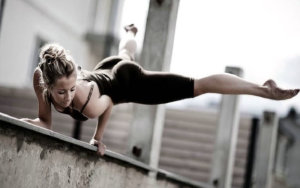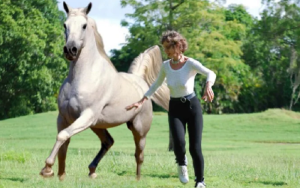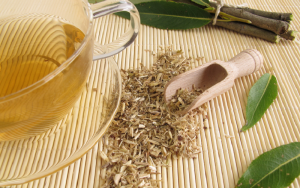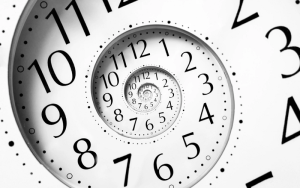
Often, when we think of martial arts, popular styles like karate, judo, or taekwondo might come to mind. Yet, there is a vast, multi-faceted tapestry of martial arts systems that extends far beyond these well-known practices. Here we venture off the beaten path and into the realm of lesser-known martial arts, from the harmony-seeking techniques of Aikido to the rhythm-filled moves of Capoeira, and beyond. These unique martial arts not only pack a punch in terms of self-defense capabilities, but also enrich practitioners with deep philosophies, cultural traditions, and an array of mental and physical benefits.
Contents
Introduction to Martial Arts Styles
Martial arts, with their wide range of techniques, philosophies, and traditions, offer us a unique lens to view and understand cultures from around the globe. They’re not merely about self-defense or physical prowess, but also about the cultivation of discipline, resilience, and a balanced state of mind. Often, when we talk about martial arts, mainstream styles like Karate, Judo, or Taekwondo tend to dominate the conversation. However, the martial arts world is much broader and more diverse than most people realize.
Understanding the different types of martial arts allows us to not only broaden our knowledge of various self-defense techniques but also gain a deeper appreciation for the diverse cultures that fostered these practices. Each martial art is a reflection of the culture from which it originates, embodying its values, history, and traditions. By exploring these lesser-known martial arts, we hope to inspire readers to see the rich diversity and creativity inherent in these systems and consider how training in these disciplines can enrich their lives, both physically and mentally.
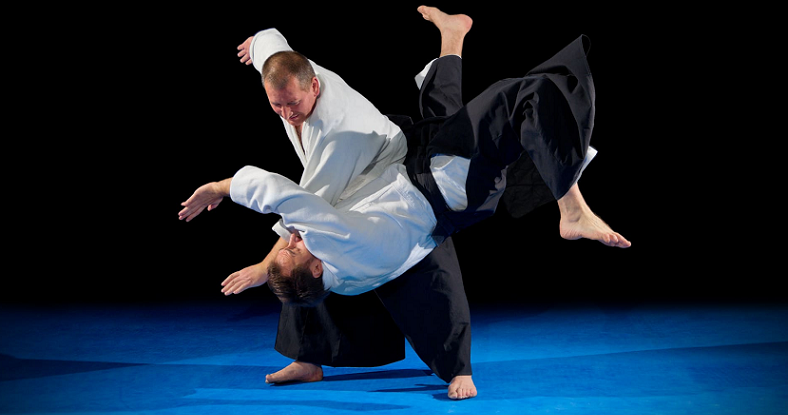
Unraveling the Philosophy and Techniques of Aikido
The world of martial arts is as diverse as it is fascinating, filled with unique styles, each offering its unique philosophy and set of techniques. One such style, which originated in Japan, is Aikido – a martial art renowned for its peaceful philosophy and fluid movements.
Origin and History of Aikido
Aikido, which translates as “the way of harmony with the spirit,” was developed by Morihei Ueshiba in the early 20th century. Ueshiba, often referred to as O’Sensei, or ‘Great Teacher,’ sought to create a martial art that prioritized harmony and peace over victory and defeat. Drawing from his experience with several martial arts, including Daito-ryu Aiki-jujutsu, swordsmanship, and spear fighting, as well as his spiritual and philosophical beliefs, he created a unique martial art focused on blending with and redirecting an opponent’s energy.
Philosophy and Principles of Aikido
At the heart of Aikido lies a philosophy of peace, harmony, and reconciliation. Rather than employing brute force to overpower an opponent, Aikido emphasizes using the attacker’s own energy to neutralize the assault. The primary goal isn’t to defeat an opponent, but to neutralize aggression, thereby protecting oneself and the attacker from harm. This principle of non-resistance is reflected in Aikido’s smooth, circular movements, which serve to divert an attacker’s force and turn it back upon them [1].
Basic Techniques and Training in Aikido
Aikido training typically involves a variety of techniques, which can generally be divided into two categories: throws and joint locks. These techniques often begin with the practitioner blending with an incoming attack, followed by using circular movements to redirect the attacker’s energy, and finally applying a throw or lock to neutralize the attack.
While training, students also practice falling safely and rolling (ukemi) as these are integral to safely receiving Aikido techniques. Traditional Aikido dojo (training halls) also include the practice of weapons, such as the wooden sword (bokken), staff (jo), and knife (tanto), as they help refine the understanding of Aikido’s movements and principles.
Benefits of Practicing Aikido
Beyond its self-defense applications, Aikido offers a multitude of physical and mental benefits. Physically, it enhances flexibility, balance, and coordination, while also offering a full-body workout. Mentally, it cultivates mindfulness, as the practitioner must remain aware of their movement, breathing, and the energy of their training partner.
Moreover, the philosophical underpinnings of Aikido can offer valuable life lessons. The emphasis on harmony and peaceful resolution of conflict can inform how one interacts with others in daily life, encouraging a more empathetic and understanding approach to interpersonal relationships.
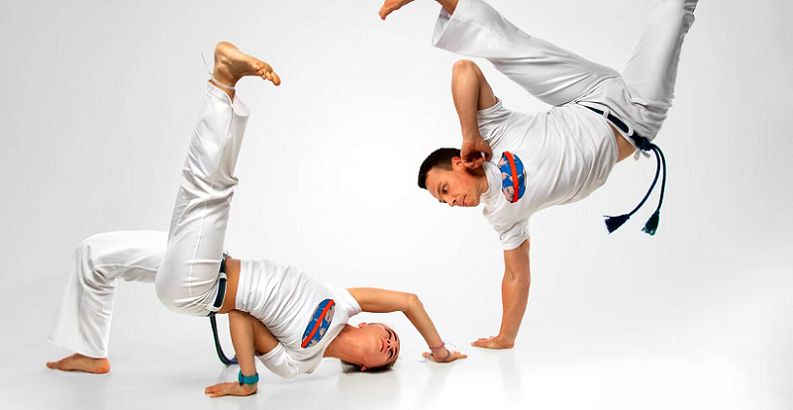
Diving Deep into the Rhythmic Martial Art of Capoeira
From the calm, harmonious flows of Aikido, we journey to Brazil, where the rhythms of music and dance merge with martial techniques to create a unique art form – Capoeira. This martial art form stands out with its seamless blend of acrobatics, dance, music, and combative elements, all performed in a ritualistic circle called the ‘roda.’
Roots and Evolution of Capoeira
Capoeira has a rich and complex history rooted in the African slave trade during Portuguese colonial rule in Brazil. It is believed to have been developed by African slaves in the 16th century as a form of self-defense disguised as a dance, allowing them to practice martial techniques without arousing suspicion from their masters. Over time, Capoeira has evolved and integrated elements of Brazilian culture and has gained global recognition as a dynamic martial art and an important symbol of Brazil’s cultural heritage [2].
Capoeira’s Blend of Dance, Music, and Martial Art
Unlike many other martial arts, Capoeira is characterized by its engaging rhythm, vivacious energy, and the strong presence of music and dance. Capoeiristas (practitioners of Capoeira) perform in a roda, a circle formed by other participants, who sing, play instruments, and clap along to traditional songs. The game (as matches are called) features dynamic, flowing movements, including kicks, spins, and acrobatic flips performed to the rhythm of the music.
This combination of music, dance, and martial techniques make Capoeira a truly unique form of expression and self-defense. The music sets the tempo and style of the game, while the lyrics often tell stories of history, folklore, or give advice.
Fundamental Movements in Capoeira
Capoeira’s repertoire of movements is as rich as its history. The ginga, or swing, is the fundamental footwork that keeps capoeiristas in constant motion. It involves a rhythmic rocking back and forth, from one foot to the other, which serves as the base for many other movements.
Kicks are integral to Capoeira, with moves like the meia-lua de frente (front half-moon kick) and armada (spinning kick) being staples. Defensive actions often involve acrobatic evasions and cartwheels, emphasizing Capoeira’s fluid, dance-like nature.
Advantages of Engaging in Capoeira
Capoeira is not only a fun and engaging way to learn self-defense but also provides an array of physical and mental benefits. Its acrobatic and fluid movements develop strength, flexibility, coordination, and cardiovascular fitness.
Moreover, the mental and emotional benefits of Capoeira are significant. The communal and rhythmic nature of the practice creates a sense of belonging and camaraderie among practitioners. It also improves musicality, rhythm, and timing, and the requirement to respond quickly to an opponent’s movements can enhance mental agility and decision-making skills.
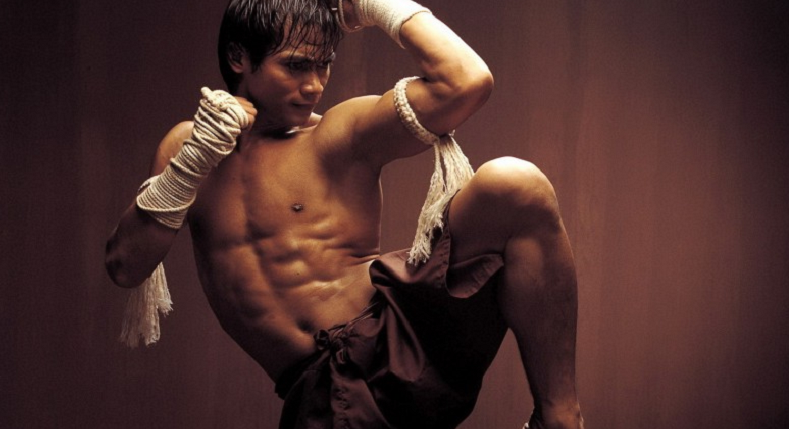
Exploring the Thai Tradition of Muay Thai
Next, we move on to the Land of Smiles – Thailand, to explore Muay Thai, a martial art steeped in history and rich cultural significance. Known as “the Art of Eight Limbs”, this martial art style is renowned for its powerful strikes and comprehensive use of the body’s natural weapons.
Muay Thai: From Ancient Battlefields to Modern Rings
Muay Thai can be traced back several centuries in Thailand, where it was developed both as a form of hand-to-hand combat for soldiers and a spectator sport during peace times. Its history is deeply intertwined with Thai culture and the development of the nation. Muay Thai has transitioned from the battlefields of ancient Siam to become a popular martial art and combat sport, attracting enthusiasts from around the globe [3].
The Art and Discipline of Muay Thai
Muay Thai is often referred to as “the Art of Eight Limbs” because it utilizes the fists, elbows, knees, and shins—eight points of contact—making it a full-body workout that engages numerous muscle groups. It’s a martial art that combines strength, agility, strategy, and mental toughness. A typical Muay Thai bout is a captivating spectacle, characterized by striking, clinching, and even throwing techniques.
Ritual is deeply ingrained in Muay Thai, with fighters often performing a ceremonial dance known as the ‘Wai Khru’ before bouts. This dance serves to honor their teacher, their training camp, and their ancestors.
Key Moves and Techniques in Muay Thai
Muay Thai training is comprehensive, including kicks, punches, knee strikes, and elbow strikes. Techniques such as the teep (push kick), roundhouse kick, jab, cross, and a variety of knee and elbow strikes form the core of most practitioners’ arsenals. Clinching—where fighters get hold of each other to deliver knee strikes or initiate throws—is also a unique and integral part of Muay Thai.
Moreover, defensive tactics in Muay Thai, such as the guard position and checking (blocking kicks with the shins), are as crucial as offensive techniques. Mastering these moves takes time, discipline, and perseverance, but the payoff is a profound sense of achievement and a versatile skill set for both self-defense and competition.
Physical and Mental Rewards of Muay Thai
Training in Muay Thai offers numerous benefits. Physically, it’s an excellent workout, enhancing strength, flexibility, and cardiovascular fitness. Regular training can help build lean muscle, improve coordination, and boost overall fitness levels.
Mentally, Muay Thai builds discipline, resilience, and self-confidence. The focus required during training can enhance concentration and help relieve stress. It also fosters a sense of respect and sportsmanship towards fellow practitioners.
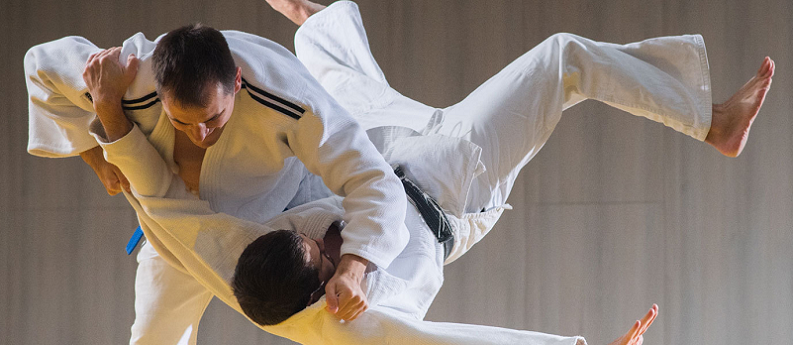
Understanding the Korean Martial Art of Hapkido
Our exploration of global martial arts continues as we delve into the Korean discipline of Hapkido, a comprehensive and dynamic martial art. Known for its diverse techniques and emphasis on practical self-defense, Hapkido offers a balanced approach to martial arts training.
Tracing the Origins of Hapkido
Hapkido’s roots are intertwined with both Korean and Japanese martial traditions. This martial art was developed by Choi Yong-Sool, who returned to Korea after World War II, following years of training in Daito-ryu Aiki-jujutsu in Japan. He combined his knowledge of this Japanese art with traditional Korean martial arts techniques, laying the foundation for Hapkido, which translates to “the way of coordinated power” [4].
The Philosophy Behind Hapkido
Hapkido’s philosophy emphasizes peaceful resolution of conflict whenever possible. Its guiding principle, “Hwa”, means harmony, suggesting that one should strive to blend with an opponent’s movements. The philosophy also encompasses the principles of “Won” (the circular principle, suggesting that a defender can redirect an attacker’s force) and “Yu” (the water principle, suggesting softness and adaptability to overcome hardness).
Techniques and Training in Hapkido
Hapkido is a comprehensive martial art that includes a wide array of techniques. Students learn various strikes, kicks, and punches, but Hapkido is especially known for its joint locks and throws, derived from Daito-ryu Aiki-jujutsu. Other techniques involve the use of traditional weapons like swords, staffs, and nunchaku.
A typical Hapkido class will usually involve warm-ups, the practice of techniques, forms (known as hyung), and often some form of sparring or self-defense scenario training. Like other martial arts, Hapkido training requires discipline, focus, and consistent effort.
Benefits Gained from Hapkido Practice
Hapkido offers its practitioners numerous physical and mental benefits. Physically, it enhances flexibility, balance, strength, and cardiorespiratory fitness, given the dynamic nature of its techniques. Its comprehensive approach ensures a full-body workout, and the practicality of its techniques can provide valuable self-defense skills.
Mentally, Hapkido cultivates discipline, concentration, and resilience. Its emphasis on harmony and adaptability can provide useful strategies for managing stress and conflicts in everyday life.
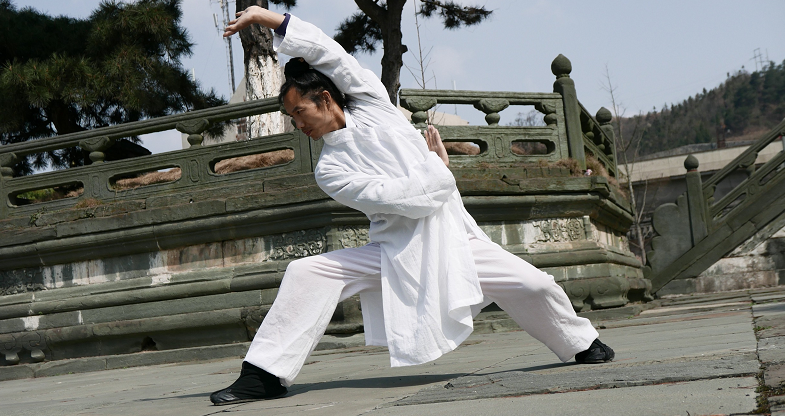
Discovering the Chinese Martial Art of Baguazhang
As we continue our global exploration of lesser-known martial arts, we find ourselves in China, the birthplace of several martial art traditions. Among these, one of the most intriguing is Baguazhang, a style renowned for its intricate footwork, circular movements, and incorporation of Daoist philosophy.
The Birth and Evolution of Baguazhang
Baguazhang, often translated as “Eight Trigram Palm,” is a relatively recent martial art in the long history of Chinese martial arts, tracing its roots back to the 19th century. It was developed by Dong Haichuan, who is said to have learned from Daoist masters in the mountains of rural China. The martial art integrates physical techniques with concepts from the I Ching (Book of Changes), a classical Chinese text that embodies the core of Daoist thought [5].
The Philosophy and Principles of Baguazhang
The core philosophy of Baguazhang draws from the principles of Daoism and the I Ching, emphasizing harmony with nature and the balancing of opposites. It’s reflected in the practice of Baguazhang, which often involves moving in circular patterns to mimic the symbol of the Yin-Yang.
The principle of change is fundamental in Baguazhang, emphasizing adaptability and fluid response to opponents. The circular movements, evasions, and rapid changes of direction aim to confuse and misdirect the opponent, allowing the Baguazhang practitioner to control the situation.
Techniques and Training in Baguazhang
Baguazhang is known for its unique training methods and techniques. The signature practice is the ‘circle walk,’ where practitioners walk in a circle while holding various postures, transitioning smoothly between them. This exercise trains the body in the fluid, adaptable movement that characterizes Baguazhang.
While Baguazhang includes punches and kicks, it is especially known for its open palm techniques, sweeping throws, and joint locks. Some styles of Baguazhang also incorporate the use of traditional weapons, such as the staff, sword, and the distinctive crescent-shaped deer horn knives.
Rewards of Baguazhang Practice
Practicing Baguazhang offers an array of physical and mental benefits. On the physical side, it enhances strength, flexibility, and cardiovascular fitness. The unique circle walking practice can also improve balance and coordination.
On the mental side, Baguazhang’s emphasis on fluidity and adaptability can foster a flexible mindset. The practice of moving in harmony with natural forces can offer a sense of peace and balance, while the strategic aspect of Baguazhang can enhance mental agility and decision-making skills.
References
[1] What is Aikido? – Learn more about the way of peace.
[2] Capoeira – Getting fit by dancing and fighting
[3] Muay Thai History
[4] From Hapkido to Kuk Sool: Exploring Korea’s Martial Arts
[5] What is Bagua Zhang? 八卦掌

